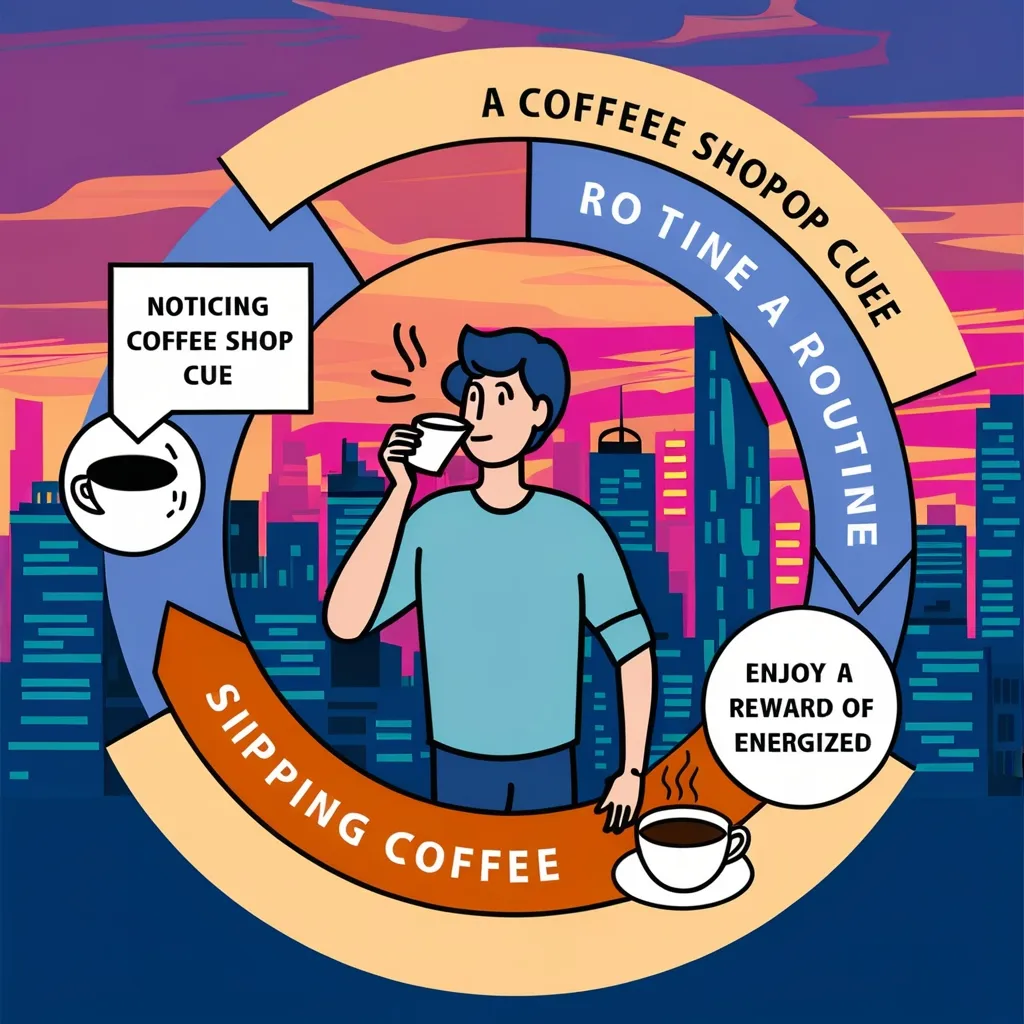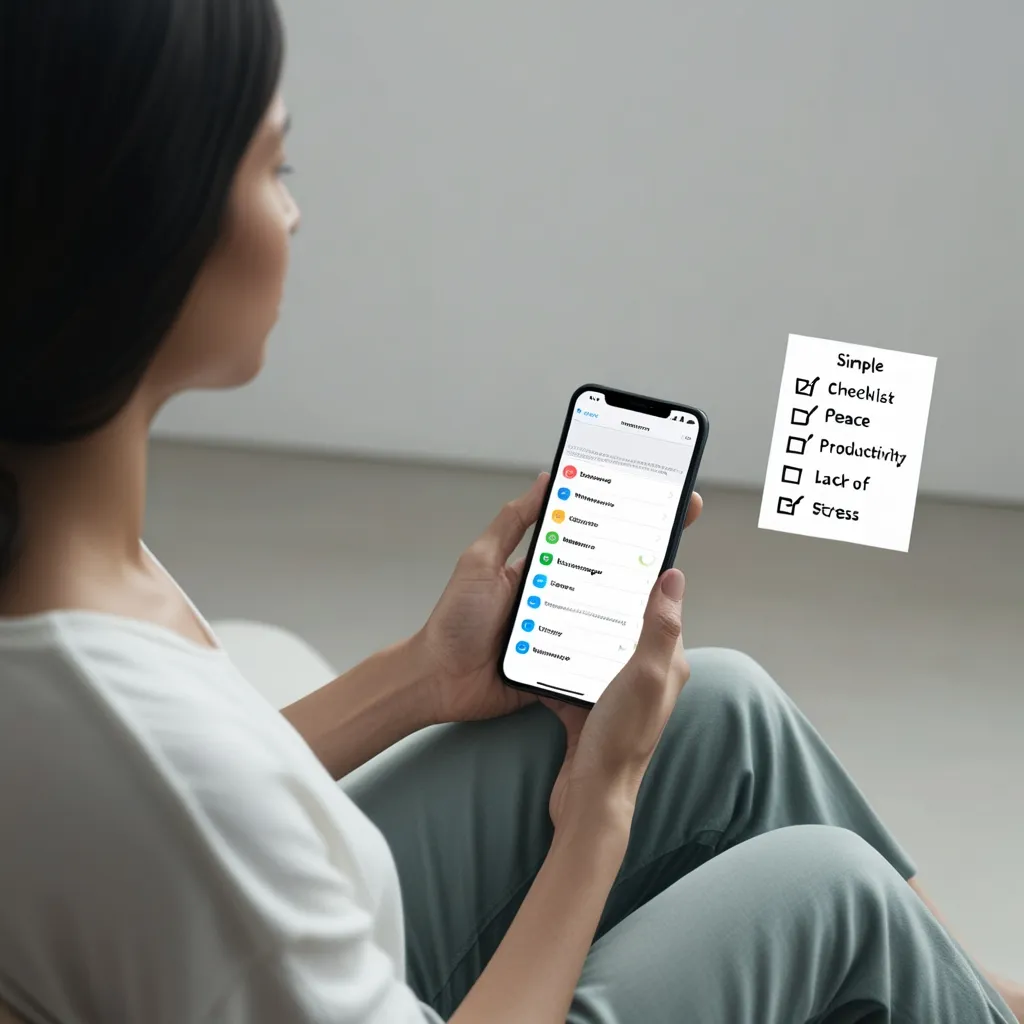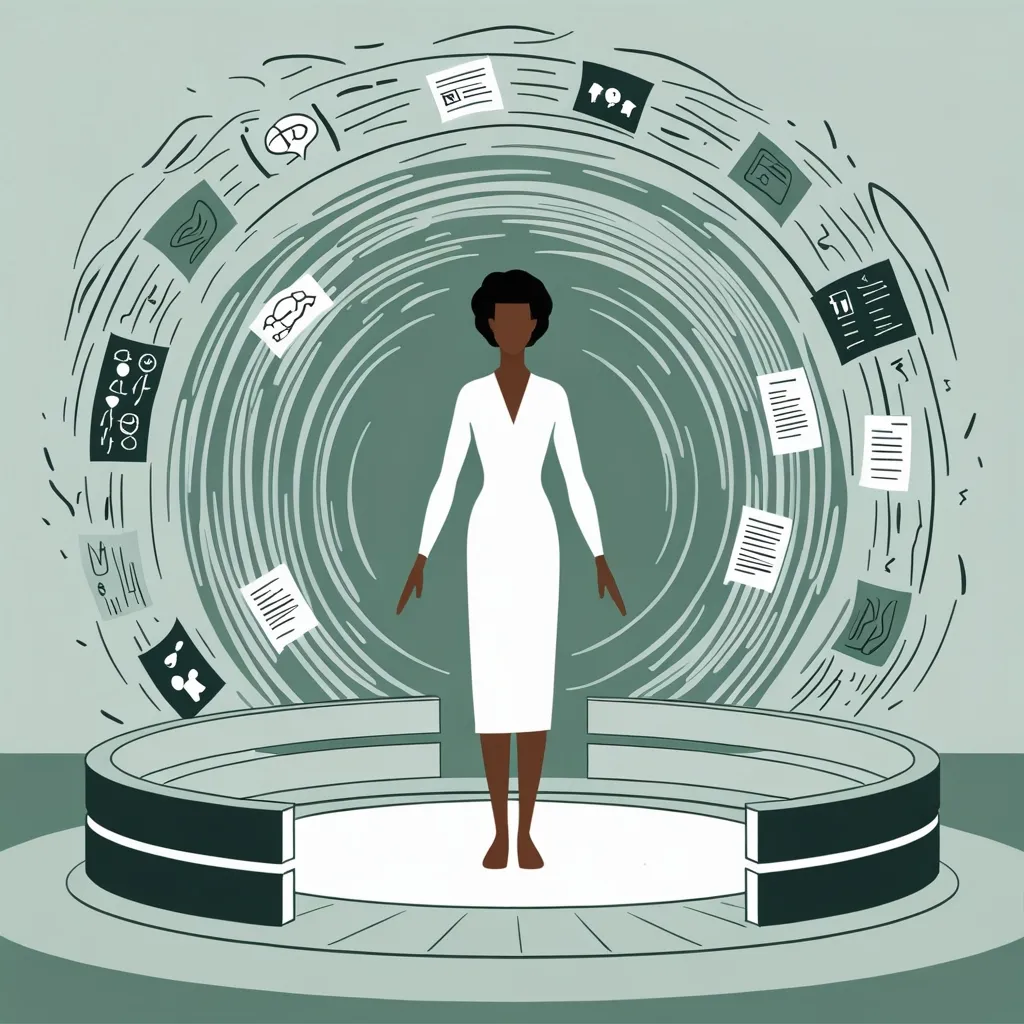Habits play a fascinating role in shaping our lives, marking a silent influence that often goes unnoticed until there’s a sudden urge to change. Imagine the routines that seem to happen almost on auto-pilot: the morning coffee ritual, the incessant checking of social media, or the workout regimen that starts your day. These are all part of a process uncovered by the Habit Loop, a concept that acts as a playbook for both forming and reshaping habits. So let’s dive deeper into this cycle and see how it can become a tool for personal growth.
This loop consists of three parts—the cue, the routine, and the reward. They’re like the three musketeers, always working together and making sure one doesn’t function without the other.
The cue is the spark that lights the fire. It’s the trigger that sets the sequence in motion, stemming from anything around you, such as the time of day, your location, a specific mood, or even the people you hang out with. Picture the scenario of walking past your favorite coffee shop and catching a sniff of freshly brewed coffee, or how feeling anxious might send you nibbling away at your nails. These cues tend to be sneaky, often popping up without us noticing, and can be just about anything—inside us like emotions or external like situational changes.
To understand cues better, think of a daily habit like morning coffee. Whether it’s the grogginess of waking up or the symphony of your alarm, once you spot these cues, you start unraveling why certain routines jump at the chance to make an appearance during specific times or circumstances.
Next up is the routine, the backbone of the habit loop. This is the action that follows the cue—a preprogrammed response done without much thought. If hunger is your cue, your routine might involve a pantry search for snacks. If boredom strikes, a mindless scroll through your phone takes center stage. Routines can be straightforward, like brushing your teeth, or more intricate, like a workout circuit.
Understanding these routines helps in identifying those actions that blend seamlessly into our daily lives, often without us fully aware why they’re there.
Then, we have the reward, the cherry on top. This is the feel-good factor, the payoff for completing your routine. It’s why habits are followed—a reward might be the delicious taste of coffee and the punch of energy from its caffeine, or it could be the warmth of social interaction on your phone. Rewards are the reason habits feel good. Whether they come instantly or take a bit of time, whether they are tangible or merely a mental pat on the back, these rewards solidify the cycle, leaving us coming back for more.
The anticipation or craving for such rewards makes us eager and drives the cycle, sometimes even before the cue has appeared in full force.
Changing a habit isn’t always about yanking it out by the roots. Instead, imagine swapping it out elegantly. The real trick lies in retaining the original cue and reward but altering the routine; like a story rewritten but keeping the title and the happy ending intact. It’s about converting existing neurological pathways so new behaviors can find a comfortable home in a more familiar setting.
Want to quit that chocolate indulgence during your pre-meeting break? There’s no need to eradicate the ten-minute pause or the joy of something sweet. Instead, swap out chocolate for a few invigorating jumping jacks and feel the satisfaction of a positive change without losing that sweet sense of reward.
The key lies in pinpointing these initial cues, scrutinizing your daily habits to see when and why certain routines kick in. Maybe you dive into snacks when the TV is on, or you find your fingers tapping away at your phone during little breaks in the day. Getting friends or family to point out patterns you might be blind to can be enlightening, showing you the signals that set your habits into motion.
Once you gain awareness of these cues, patterns start to form like pieces of a puzzle clicking into place. Perhaps a particular friend nudges a specific behavior, or a precise hour triggers a specific action. With mindful vigilance, you can replace these grooves in the record with healthier routines.
Moving forward involves a few practical steps: capturing these cues in their tracks, dissecting the routine that follows, appreciating the depth of the reward, and finally making that revolutionary swap that keeps the loop but changes the tune. Consistency plays its part too; sticking through the initial turbulence until the new habit forms and settles in, ideally over a few weeks.
Imagine transforming a snack habit into a stretching session during TV time. You are still getting the relaxation hit, but in a way that benefits your body. Or picture substituting a compulsive phone check with diving into a book or a warm brew—still soothing but far more enriching.
Being mindful is like hitting the pause button, allowing us to see, feel, and examine what’s happening. Awareness of surroundings, emotions, and internal dialogues lets you spot your cues and make decisions about either sticking with or reshaping your actions.
Cravings inject enthusiasm and anticipation into the habit loop, promising that spike of dopamine when the reward is within reach. This craving magnet keeps pulling you back to the start of the loop, repeating the cycle and weaving it further into your routine.
Replacing habits rather than eliminating them is a gentle, effective strategy. It’s about guiding the Habit Loop to suit healthier desires rather than trying to eliminate behaviors completely. This offers better long-term success and helps integrate new habits in a way that feels seamless and less disruptive.
With patience, consistency, and awareness, this simple framework can transform into a reliable ally in the quest for self-improvement, ensuring we navigate life with a bit more intention and a lot more control over our everyday habits.






